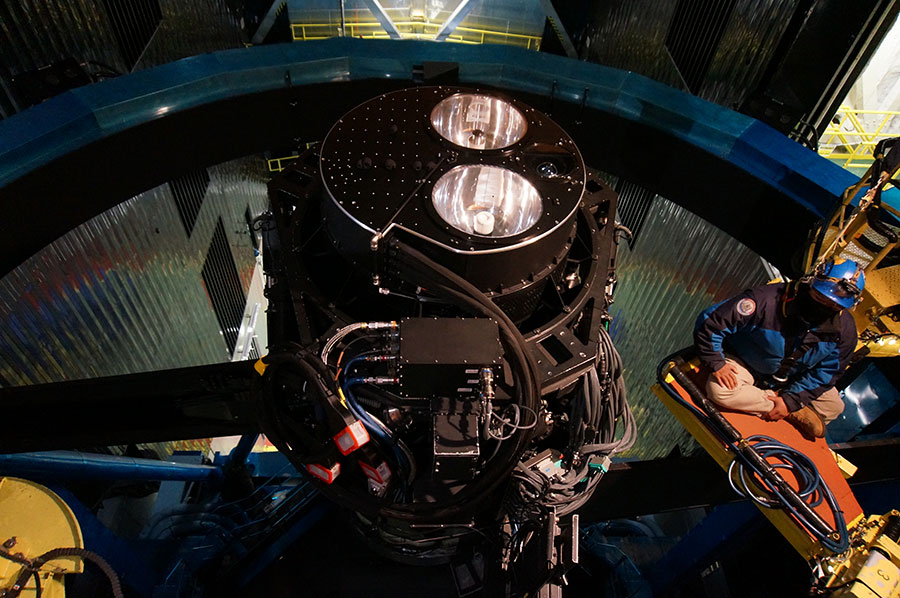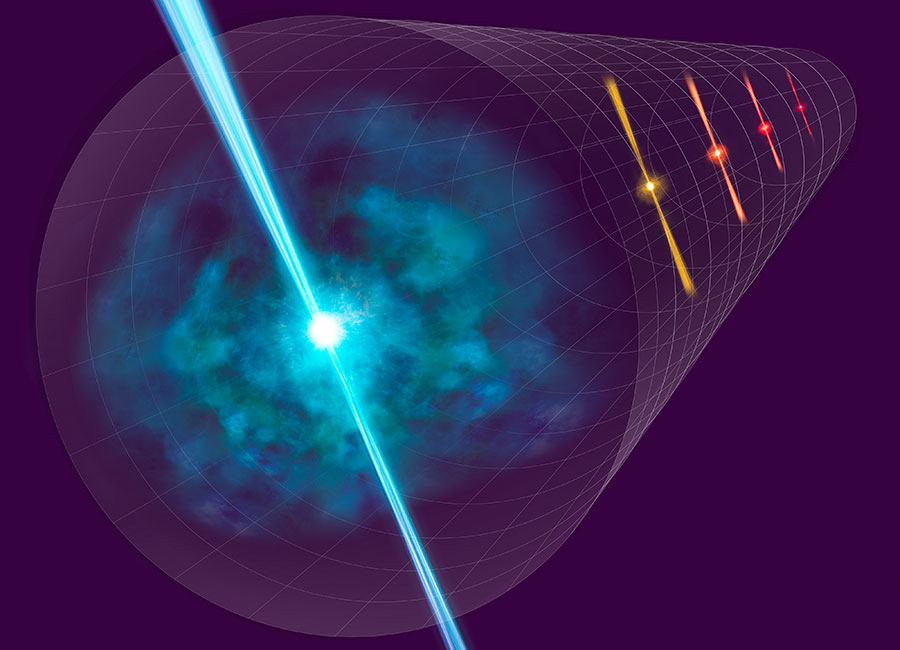
Galaxies start life with their stars rotating in an orderly pattern but in some the motion of stars is more ...
Read More

Galaxies start life with their stars rotating in an orderly pattern but in some the motion of stars is more ...
Read More
The Subaru Telescope successfully demonstrated engineering first light with a new instrument that will use about 2400 fiberoptic cables to capture the light from heavenly objects. Full operation is scheduled to start around 2024. The ability to observe thousands of objects simultaneously will provide unprecedented amounts of data to fuel Big Data Astronomy in the coming decade.
In addition to cameras, astronomers also use instruments known as spectrographs to study celestial object. A spectrograph breaks the light from an object into its component colors, in other words it creates a precise rainbow...
Read More
An international team of 23 researchers led by Maria Dainotti, Assistant Professor at the National Astronomical Observatory of Japan (NAOJ), has analyzed archive data for powerful cosmic explosions from the deaths of stars and found a new way to measure distances in the distant Universe.
With no landmarks in space, it is very difficult to get a sense of depth. One technique astronomers use is to look for “standard candles,” objects or events where the underlying physics dictate that the absolute brightness (what you would see if you were right next to it) is always the same...
Read More
The Subaru Telescope has captured images of more than 1800 exploding stars in the Universe, some 8 billion light years from Earth. By combining one of the world’s most powerful digital cameras and a telescope capable of capturing a wider shot of the night sky compared to other big telescopes, a team of researchers from Japan have been able to identify about 1800 new supernovae, including 58 Type Ia supernovae 8 billion light years away, reports a new study released online on 30 May.
A supernova is the name given to an exploding star that has reached the end of its life...
Read More
Recent Comments